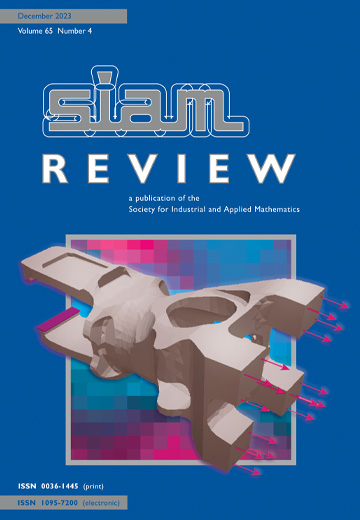培养具备数学建模技能的劳动力
IF 6.1
1区 数学
Q1 MATHEMATICS, APPLIED
引用次数: 0
摘要
SIAM Review》,第 66 卷第 4 期,第 778-792 页,2024 年 11 月。 数学家历来是一个精选的学术群体,他们提出的具有重大影响力的观点能够在多个科学领域取得实质性成果。在过去的 35 年中,攻读数学或统计学的本科生在美国授予的学士学位中所占比例几乎保持不变,约为 1%。即使在 STEM 专业中,数学或统计学也只占全国授予的本科学位的 6%左右。然而,对 STEM 专业人才的需求持续增长,而所需的职业技能清单在很大程度上依赖于数学建模课程的基础概念,其中数据、计算机模拟和基本理论框架的相互作用占据了中心位置。期望这些 STEM 本科生中的大多数人攻读包括数学在内的双主修专业是不可行的。在此,我们将介绍我们的解决方案、其实施的一些早期结果,以及可能在全国范围内采用的愿景。本文章由计算机程序翻译,如有差异,请以英文原文为准。
Developing Workforce with Mathematical Modeling Skills
SIAM Review, Volume 66, Issue 4, Page 778-792, November 2024.
Mathematicians have traditionally been a select group of academics who produce high-impact ideas enabling substantial results in several fields of science. Throughout the past 35 years, undergraduates enrolling in mathematics or statistics have represented a nearly constant proportion of approximately 1% of bachelor degrees awarded in the United States. Even within STEM majors, mathematics or statistics only constitute about 6% of undergraduate degrees awarded nationally. However, the need for STEM professionals continues to grow, and the list of required occupational skills rests heavily in foundational concepts of mathematical modeling curricula, where the interplay of data, computer simulation, and underlying theoretical frameworks takes center stage. It is not viable to expect a majority of these STEM undergraduates to pursue a double major that includes mathematics. Here we present our solution, some early results of its implementation, and a vision for possible nationwide adoption.
Mathematicians have traditionally been a select group of academics who produce high-impact ideas enabling substantial results in several fields of science. Throughout the past 35 years, undergraduates enrolling in mathematics or statistics have represented a nearly constant proportion of approximately 1% of bachelor degrees awarded in the United States. Even within STEM majors, mathematics or statistics only constitute about 6% of undergraduate degrees awarded nationally. However, the need for STEM professionals continues to grow, and the list of required occupational skills rests heavily in foundational concepts of mathematical modeling curricula, where the interplay of data, computer simulation, and underlying theoretical frameworks takes center stage. It is not viable to expect a majority of these STEM undergraduates to pursue a double major that includes mathematics. Here we present our solution, some early results of its implementation, and a vision for possible nationwide adoption.
求助全文
通过发布文献求助,成功后即可免费获取论文全文。
去求助
来源期刊

SIAM Review
数学-应用数学
CiteScore
16.90
自引率
0.00%
发文量
50
期刊介绍:
Survey and Review feature papers that provide an integrative and current viewpoint on important topics in applied or computational mathematics and scientific computing. These papers aim to offer a comprehensive perspective on the subject matter.
Research Spotlights publish concise research papers in applied and computational mathematics that are of interest to a wide range of readers in SIAM Review. The papers in this section present innovative ideas that are clearly explained and motivated. They stand out from regular publications in specific SIAM journals due to their accessibility and potential for widespread and long-lasting influence.
 求助内容:
求助内容: 应助结果提醒方式:
应助结果提醒方式:


